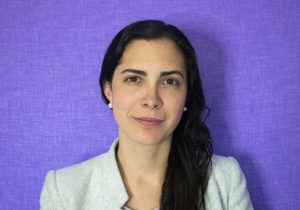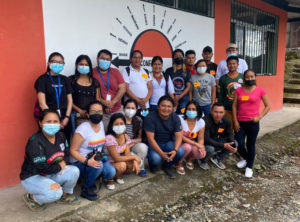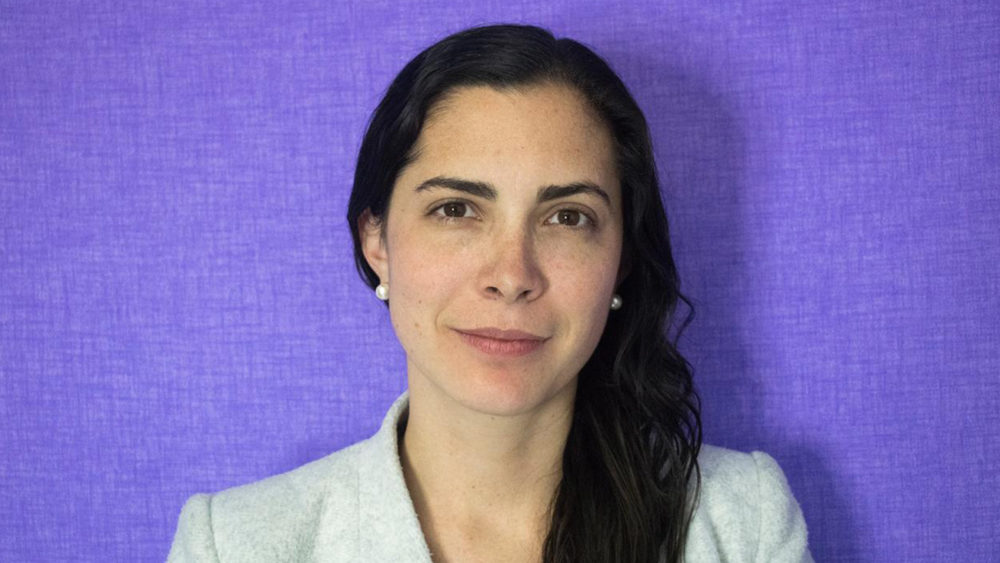Isabela Ponce is a journalist, co-founder and editorial director of GK [1]. Her articles specialize in issues related to the rights of girls and wome n, minorities and
n, minorities and
the environment, emphasizing the situation of specific regions of Ecuador.
In 2019 she won a mention from the Inter American Press Association (IAPA), in the opinion category for a column on gender violence, and was part of the finalist team for the “Gabo Aw
ard”[2] in the coverage category for the project Frontera Cautiva (Captive Border). In 2020 she was a finalist in the Online News Association awards for the project “The women who beat the desert”[3].
In May 2021, Isabela Ponce won the Ortega y Gasset Journalism Award in the category of Best Journalistic Story or Investigation, for her report The Women Who Beat the Desert. [4]
QUESTIONS:
- As an Ecuadorian journalist, what is your motivation to write stories with a Human Rights approach that prioritize women?
The motivation comes a little by the absence of these stories, by the need for a space like this; I cannot say that I am the only one or that GK is the only media that covers it, but we do it permanently. And, why it is important from journalism, because it clearly covers a social function of reaching large audiences, those that cannot always be reached from the institutions or from the academy. Therefore, it is better to take advantage of these characteristics that the media have in order to carry messages that can be complex and ground them so that they can just be a medium and reach them with ideas; then, we can recover the social role that journalism has by choosing to tell other types of stories.
- From a gender perspective, what role do you think women play in environmental care and forest conservation?
The gender perspective is related to the human rights approach, nothing is divorced, it is a cross-cutting issue, I believe that in conservation and environmental matters as in other areas, it is to be able to show how women, because of their history, their context, the socio-cultural issue, are concerned about something more than individual benefit. I think it is evident in many aspects and, in this issue of environmental care it is also seen, many times it is not consciously manifested that women are taking care of their families, of their environment, that is, performing many care tasks, that sometimes they believe it is normal or that it is part of their role in society, but that in reality the fact that women are mostly dedicated to tasks, may be something imposed. For me it is important to show in the stories how things happen and also present the positive side, for example, if a woman participates in the urban process, that woman will think that this space is more inclusive for others. In the case of the environment, they are not only thinking about the care of a space for them, but rather they conserve their environment thinking about a greater good; I think it is important to show these stories that in themselves reveal these concepts that can be complex.It is still important to work on reducing gender gaps in the countryside and in the Amazon, it is important to understand the relationship that Amazonian women have with their environment, which is different from the one that exists in the cities. A common factor that rural women have in general is their generosity and gratitude towards those who visit their communities, in addition to their strength and their ability to think in community. - In your report, winner of the Ortega y Gasset award, you show the importance of access to and use of water. How prepared do you consider that rural communities are, especially in the Amazon to face Climate Change?Rural communities have been adapting empirically to this phenomenon, and in the case of history they make great efforts to obtain water. I believe that there could be more support from local governments, who are responsible for meeting the needs of access to basic services and infrastructure. The implementation of projects to mitigate climate change such as FORECCSA is noteworthy, thanks to this project we met the women of history in Jubones. In this sense, a greater presence of the State is necessary to guarantee the quality of life of the inhabitants. It is also important to give continuity to programs and projects that work to help communities.
- August 9 is the International Day of Indigenous Peoples. What challenges do you think the indigenous peoples and nationalities in Ecuador still face, especially in the Ecuadorian Amazon?Along with the phenomenon of climate change, which is a very broad problem that affects us all, I believe that the greatest challenge faced by indigenous peoples and nationalities has to do with deforestation, whether for the sale of timber or for infrastructure works, in addition to the pressure suffered daily by the communities due to the loss of their territories; there is a great deal of dispossession of these groups.
- The Amazon is a unique place. What achievements do you consider that indigenous leaders have achieved for the conservation of forests and their territories?
The challenge is very great, there are more than 400 cases of indigenous leaders who have suffered attacks and threats for defending their territories, and in the face of environmental damage, the integrity of Amazonian leaders is in danger, as denounced in reports from human rights organizations.Faced with this problem, in recent years we have seen important triumphs on the part of indigenous communities and peoples over extractive companies, which provides hope that things may be different. Cases in defense of the country’s biodiversity must be rescued. From GK, the means of communication that we have, we try to tell those stories, that is important. - What do you think is the contribution of communication to conserve our forests, hand in hand with the actors who depend on them? Why is it important to tell these stories?It is important to know the voices of the country’s cultural diversity not only on emblematic dates, but to be able to include groups in all kinds of stories to make them visible and ensure that this minority becomes part of the majority.
Presenting conservation stories allows others to learn about the importance of conserving forests and also to learn firsthand how Amazonian communities live and the relationship they have with nature.
It is essential to make visible the stories that connect with the citizens, but it is important to connect this concept that can be broad in a friendly way with the audience, there is still a space of opportunity for people to understand this concept, it is necessary to make it more visible. It is important that the focus of the stories mentions which SDGs they address and above all to break down stereotypes about gender and about peoples and nationalities within the media.

Photograph: Courtesy of Isabela Ponce
Description: Isabela Ponce with young journalists from the Ecuadorian Amazon, June 2021.
[1] GK, is an independent media that does deep journalism and social impact with a focus on Human Rights in three areas: Transparency, Gender and Environment. It is currently among the 10 most read media in Ecuador. https://gk.city/que-es/
[2] The Gabo Award promotes better journalism, the pursuit of excellence, innovation, rigor in the treatment of facts and ethical coherence on the part of journalists who work and publish regularly in Spanish and Portuguese for audiences in the Americas, Spain and Portugal. It is awarded by the Gabo Foundation, the same that bears the pseudonym of the Colombian narrator and journalist Gabriel García Márquez. Source: https://premioggm.org
[3] Source: https://gk.city/2020/02/17/adaptacion-cambio-climatico/
[4] Source: https://gk.city/2021/05/25/premio-ortega-gasset-gk-isabela-ponce/
Author: José Miguel Gálvez, Strategic Communication of Projects Technical Specialist – PROAmazonía
 Español
Español English
English

Comments are closed.